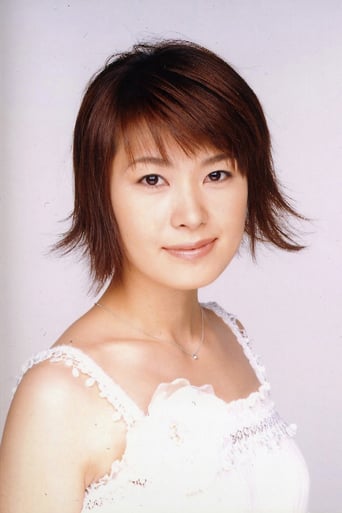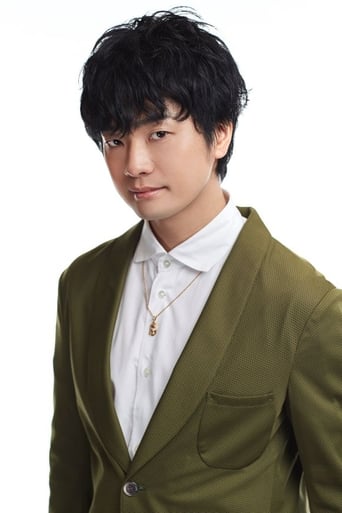ThiefHott
Too much of everything
Stometer
Save your money for something good and enjoyable
Exoticalot
People are voting emotionally.
AnhartLinkin
This story has more twists and turns than a second-rate soap opera.
jastercinos
I'll start with, this show is one to taste. While it is constructed immaculately, the themes and presentation will not suit everyone. If you dislike series which don't end with giving you a clear message or ending point, this is assuredly a show you'll want to pass on. Conversely, if you want a show to challenge you, and demand of you to put its pieces together to form the greater whole, Boogiepop Phantom is one of the best. Similarly, be prepared for a very dark, emotional look into people and life. Suicide is an extremely common theme, and a large percent of the characters you follow do not survive, if you show to cheer you up at every chance, or one you expect to follow a character through their dark times until they triumph, best look for Mizaki.Centered around a theme of regret and memory, it is constructed uniquely, with each episode following a different character, as their actions interconnect, all centered around the same mystery. While many episodes overlap in their frame of time, there is an overall story that develops which comes to a conclusion at the end, in its own way. There are few clear cut villains (about two, neither of which last the entire series), and it is more about the opposing ideals. While there is a lot of clashing personalities, there is little 'action'. Opposed to anime norm, fights are over quick generally done in a single stroke, and not the focus of any scene, and most conflicts are resolved mostly with a discussion, followed by a single element to remove one side so the show can continue with whatever message that episode delivers.While the show is about these messages, it includes mystery, starting with a series of murders, finding who, why and what the murderer is through the lenses of the different characters throughout different phases of the 5ish year span most of the stories are told. The occasional 'action' scene, often chases and suspenseful moments of hiding and tense conversation.The show's strongest point is its style. It has almost no waste, using every line of dialog and shot to add to its story or inform the viewer of a character or concept, from including construction in many backgrounds to reinforce its message of the need for change, to the sepia rich colors used in most episodes to remind you of the past. The music reinforces this in the absolute best way it can, using piercing notes, off key music, and chaotic static noises to reinforce character confusion, uncertainty and insanity, to finally Boogiepops iconic whistle in its clarion tune piercing through all of it.It is not without flaws, due to its dedication to realistic characters, it is at times hard to tell them apart, and telling them apart is at times vital. This is made harder with its heavy sepia tone, at times so dark its hard to see, while a few strange English translation choices obscures some parts, though not too bad (and the acting is on target, though feels flat, it is by design given the low key tone of the show, it can make it disengaging, particularly those who are on the fence with the style).
csi_yellowknife
I must admit I giggled when I heard the name "Boogiepop Phantom" at first. It had the sound of a cheap 60s cartoon that combined Scooby Doo's ghosts and Archie's bad music. Nothing could be further from the truth.BPP is an anime, but much more than that. It is a show that is rather difficult to describe, but I'll try. "Boogiepop" is something of an urban legend, like the Boogieman, a being that takes people at the end of their life, or something like an angel of death. However, people living now claim to have seen Boogiepop. In addition, there was an unexplained column of light that appeared, people missing, a serial murderer that suddenly stopped years ago, and an abandoned Amusement Park that is suddenly coming to life. That just scratches the surface.What is impressive about BPP is the way the story is told. The 4th episode happens before the first three. We are introduced to major characters in the first episode who do not appear again for a few episodes. Things happen on screen out of time with the rest of what's going on. Overall, the show should be one that fans of X-Files, The 6th Sense, or the Twilight Zone should enjoy. That's a challenging show that will make you use your rewind button more than once.
marxisdead
If you liked «Lain», you will LOVE «Boogiepop phantom» which is, in my view, much more interesting. Every episode has its own story, and can be watch by itself. As the story progresses though, it all fits together to form a larger plot. One last thing; the music is excellent and very well used to create intensity.
Brian Camp
"Boogiepop Phantom" (2000) is a 12-part TV series that takes Japanese animation into some of the new psychological dimensions pioneered by "Serial Experiments Lain" back in 1998. Like "Lain," it focuses on a cast of troubled Japanese high school kids, but steers clear of the earlier series' cyberspace trappings, drawing instead on the more subtle horror stylings found in such live-action Japanese successes of recent years as RING and UZUMAKI. Most of the teens highlighted in "Boogiepop" are visited by imaginary characters or "see" things or people that their classmates can't. The elusive female title figure, a self-proclaimed "Angel of Death," appears on occasion to try to intervene on behalf of the tormented kids. One seemingly normal girl, Nagi Kirima, emerges as the series' sole heroine. Not untouched by trauma herself, she is aware of all the weird goings-on and actively tries to investigate and do something about them.
Based on a popular series of novels by Kadono Kouhei (as yet unavailable in English), the series plays interesting tricks with time, jumping back and forth between past and present incidents in the teens' lives, often presenting certain events from different characters' viewpoints. Five years earlier, strange phenomena occurred in the small Japanese city where the series is set, set off by an inexplicable beam of light that burst forth at night from the city up to the sky. A series of unsolved killings took place around the same time. All of the characters in the cast were irrevocably affected by that time and experience frequent flashbacks to those events.
Eventually, in the course of the 12 episodes, it becomes clear, at least to this reviewer, that the series is really about the psychic pain of growing up in the Japanese social system. Children are not adequately protected by the adults in their lives and their childhood dreams are inevitably shattered quite early. One fanciful imaginary character, Poom Poom, who seems to have emerged from the psyches of two separate wounded souls, acts as a Pied Piper to all the troubled kids, inviting them to an abandoned amusement park that comes to spectacular life at his command. One riveting scene, arguably the key to the whole series, involves a confrontation at the park between Poom Poom and the indignant Boogiepop herself. The stories behind Poom Poom's creation are particularly heart-wrenching and reflect the kind of everyday trauma that creative, sensitive kids experience quite frequently, not just in Japan, but in almost any large, faceless bureaucratic school system. The live-action film BATTLE ROYALE, a major Japanese hit of 2000, offered a similar message of indictment of Japanese society and its treatment of children, but the longer form "Boogiepop" takes a less visceral, more multifaceted approach, relating the kids' stories one by one and detailing exactly what went wrong and at what point."Boogiepop" has been accomplished via the digital animation process that dominates Japanese animation today. While the digital process is often simply a lazy substitute for the greater complexity of hand-drawn artwork, it is used quite creatively here and is well-suited to the particular psychological mood created by the shifting points-of-view and subjective storytelling. This is a far cry from traditional Japanese animation and its stylistic advances should be judged on their own merits.
"Boogiepop Phantom" stands out as an extremely demanding and challenging piece but one that will strike the more serious fan as an anime work of art, employing technical skill, visual imagination and keen insight to illuminate the hidden layers of the human condition.






